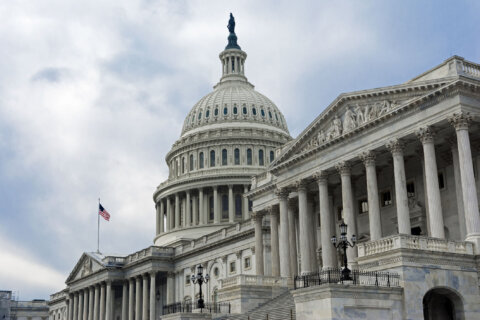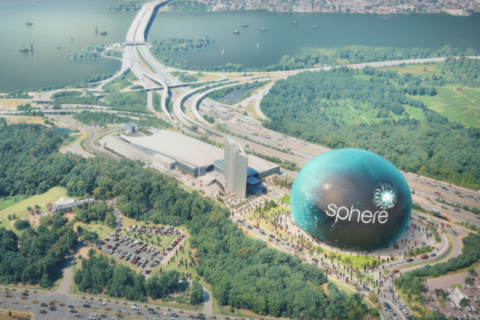This article was republished with permission from WTOP’s news partners at Maryland Matters. Sign up for Maryland Matters’ free email subscription today.
Maryland has about 70 dentists per 100,000 residents, according data from the Centers for Disease Control and Prevention in 2020, but that doesn’t mean that they are equally distributed across the state.
State health officials and dental health advocates say that Baltimore and parts of the Eastern Shore and Western Maryland not only lack dentists, but have other barriers that make it difficult for residents to keep up with their oral health.
The Maryland Department of Health aims to change that with a new program urging dental students to launch their careers in areas with dental health care shortages.
The Pathways to Bright Futures program, which launched Wednesday, will educate those students about the dentistry profession in hopes of easing shortage in targeted areas.
Dr. Nilesh Kalyanaraman, the health department’s deputy secretary for public health services said Wednesday that fixing the workforce shortage “won’t be easy and is not going to happen overnight,” but improving access to dental services will help improve overall health equity in Maryland.
“When I think about our vision for health equity in Maryland, I see everyone in our state having a fair and just opportunity to be as healthy as possible. It’s going to take hard work … to ensure that health equity includes healthy mouths, teeth and gums for all Marylanders,” he said.
Dr. Debony Hughes, director of the department’s Office of Oral Health, said that many areas in Western Maryland, the Eastern Shore and Baltimore have fewer than 20 dentists per 100,000 residents, well below the national average of 61 dentists per 100,000 residents.
“This program is a collaborative effort to work with students and foster their interests in the oral health field and provide support to those who know they want to practice in the profession,” Hughes said Wednesday during the program kickoff at the Dr. Samuel D. Harris National Museum of Dentistry in Baltimore
Pathways to Bright Futures is funded by a grant to the state from the federal Health Resources and Service Administration. At Wednesday’s event, six dental health students were awarded funds to help pay their dental school tuition.Each of the students plan to practice dentistry in one of the state’s dental shortage areas.
“Cavities in children and adults, and gum disease especially in adults, are among the most prevalent chronic diseases in the United States,” Kalyanaraman said. “The main reason why oral disease is so prevalent is that far too many Marylanders experience barriers to preventative and essential dental care.”
He noted that when Maryland dentists set up their practice, they tend to gather in “more populated and higher income areas, creating significant gaps in access to dental care across other regions of the state.”
“This shortage creates an uneven distribution of dental professionals across the state, which leads to decreased access to dental care, especially in already underserved communities,” Kalyanaraman said.
Dr. George Shepley, a general dentist in Baltimore since 1978 who previously served as president of the American Dental Association, said dental care can help identify other health needs.
“They’re connected. Totally. Especially with things like diabetes and cardiac disease,” Shepley said Wednesday. “And in the world of dentistry, you’ll get insight into well-being overall. You’ll help diagnose other conditions and empower people to really take responsibility for their lives.”
Mary Backley, CEO of the Maryland Dental Action Coalition, said there are a multitude of logistical and economic barriers that can make it challenging for some Marylanders to get to a dental appointment.
Besides a lack of equal access to the state’s 4,300 registered dentists, another issue in dentist shortage areas is transportation, particularly for the more rural communities in Western Maryland and on the Eastern Shore.
“The biggest barriers, rural-wise, is the distance … It can take miles and miles and miles to get to a provider,” Backley said after Wednesday’s event.
Baltimore residents are more likely to be face a long waitlist to get a dental appointment, according to Backley. And both rural and city residents may struggle to afford child care or take time off work to go to the dentist in the first place.
There are also financial hurdles that make it harder for families to afford a trip to the dentist.
As of January 2023, Medicaid in Maryland began to cover certain dental services for adults. And the General Assembly this year passed legislation to study the feasibility of including full and partial dentures under Medicaid coverage. Gov. Wes Moore (D) signed the bill in May.
The state Medicaid expansions can help many low-income families receive dental health care, so long as they have access to a provider that accepts Medicaid. Not all dentists in Maryland do.
Backley hopes that the Pathways to Bright Futures program will encourage more young people to look to dentistry as a career path and help fill in some of the coverage gaps in the state.
On the bright side, Backley said that residents and Maryland health officials are taking dental health care seriously.
“It’s been incremental, but each year there has been progress,” she said. “People understand the importance of oral health. And the importance of oral health to overall health.”







